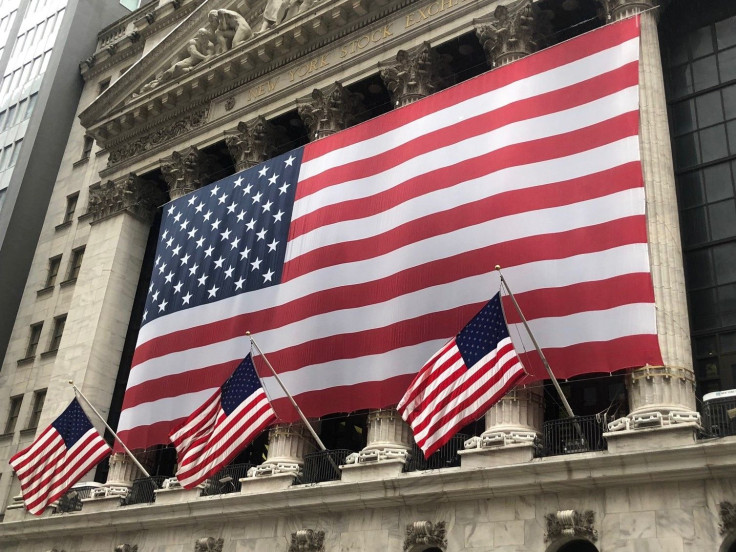Wednesday's Stock Market Open: US Equities Drop As White House Warns Of Many Deaths From Coronavirus

KEY POINTS
- White House warned up to 240,000 Americans could die from coronavirus
- The Dow plunged 23.2% in the first quarter, while the S&P 500 dropped 20%
- Some large U.K. banks have scrapped their dividends
Update: 12:05 p.m. EDT:
U.S. stocks continued to incur losses at noon on Wednesday.
The Dow Jones Industrial Average dropped 705.15 points to 21,212.01, while the S&P 500 fell 89.56 points to 2,495.03 and the Nasdaq Composite Index tumbled 215.79 points to 7,484.31.
In Europe markets finished broadly lower, as Britain’s FTSE-100 dropped 3.83%, France’s CAC-40 tumbled 3.94% and Germany’s DAX fell 4.3%.
The Commerce Department said spending on U.S. construction projects fell by 1.3% in February with both housing and nonresidential construction showing weakness even before the coronavirus pandemic hit.
Original story:
U.S. stocks dropped on Wednesday after the White House warned the country could see hundreds of thousands of deaths from coronavirus.
The Dow Jones Industrial Average dropped 864.46 points to 21,052.70, while the S&P 500 fell 94.87 points to 2,489.72 and the Nasdaq Composite Index tumbled 236.52 points to 7,463.57.
On Tuesday night President Donald Trump said the U.S. should brace for a “very, very painful two weeks” from coronavirus. “This is going to be a rough two-week period,” Trump said. “When you look at night the kind of death that has been caused by this invisible enemy, it’s incredible.”
White House officials are anticipating up to 240,000 virus-related deaths in the U.S.
After a historically disastrous first quarter and March, DoubleLine Capital CEO Jeffrey Gundlach said things will likely worsen in April.
“The low we hit in the middle of March … I would bet that low will get taken out,” Gundlach said. “The market has really made it back to a resistance zone. ... Take out the low of March and then we’ll get a more enduring low.”
The Dow plunged 23.2% in the first quarter, while the S&P 500 dropped 20%.
“The [first] quarter will be remembered as the fastest and greatest drop in the stock market for the start of any post-war bear market,” said Jim Paulsen, chief investment strategist at the Leuthold Group. “This reflects the fact that this bear is the only one cause by a recession which was simply ‘proclaimed’ as leaders announced they were essential shutting down the economy. Since a recession was ensured, the bear skipped all its normal foreplay and simply went right to the end fully reflecting a recession almost immediately.”
Some large U.K. banks have scrapped their dividends to preserve cash.
The coronavirus pandemic has shut down untold numbers of businesses around the world, although some Chinese factories have reopened.
“In the U.S., the data remains fairly worrying and the peak may well be a few weeks on,” said Bob Parker, an investment committee member at Quilvest Wealth Management. “The economic data is clearly starting to improve in March in China after a very weak January and February.”
Private companies in the U.S. reduced payrolls by 27,000 in early March through Mar. 12, according to a report Wednesday from ADP and Moody’s Analytics. But this figure predates the massive impact of virus-related job losses.
Overnight in Asia, markets were lower. China’s Shanghai Composite slipped 0.57%, while Hong Kong’s Hang Seng fell 2.19%, and Japan’s Nikkei-225 dropped 4.5%.
In Europe markets trade broadly lower, as Britain’s FTSE-100 dropped 3.76%, France’s CAC-40 tumbled 4.08% and Germany’s DAX fell 4.05%.
Crude oil futures slipped 0.24% at $20.43 per barrel, Brent crude dropped 4.25% at $25.23. Gold futures fell 0.41%.
The euro slipped 0.97% at $1.0926 while the pound sterling edged down 0.07% at $1.2403.
© Copyright IBTimes 2025. All rights reserved.




















